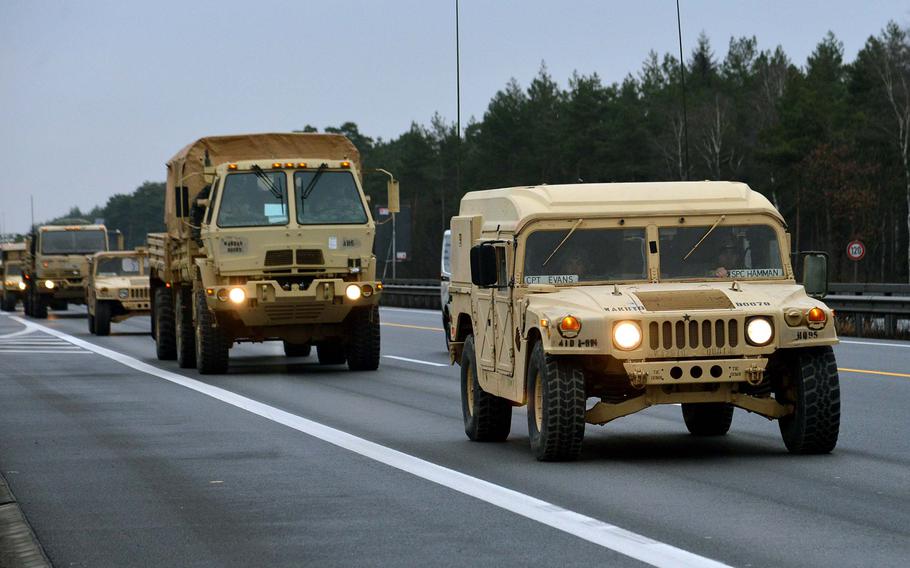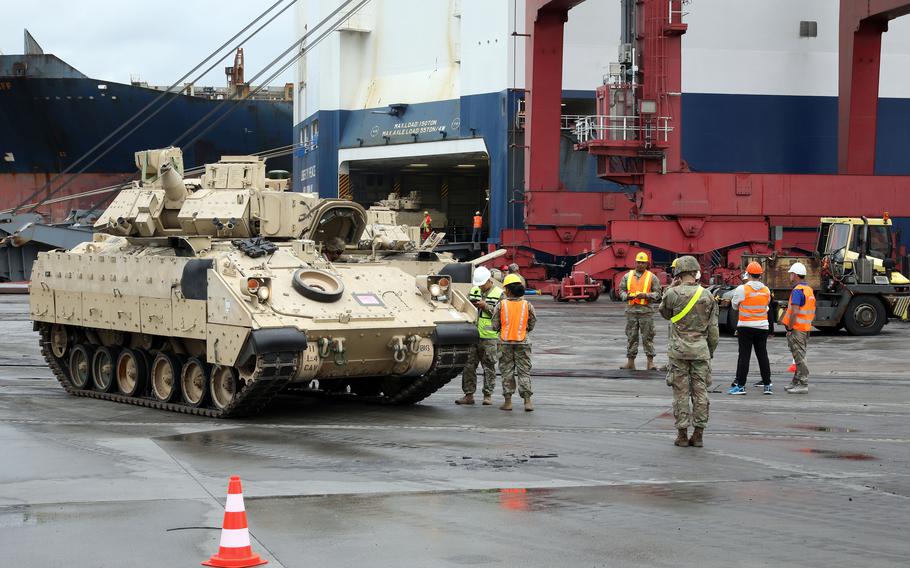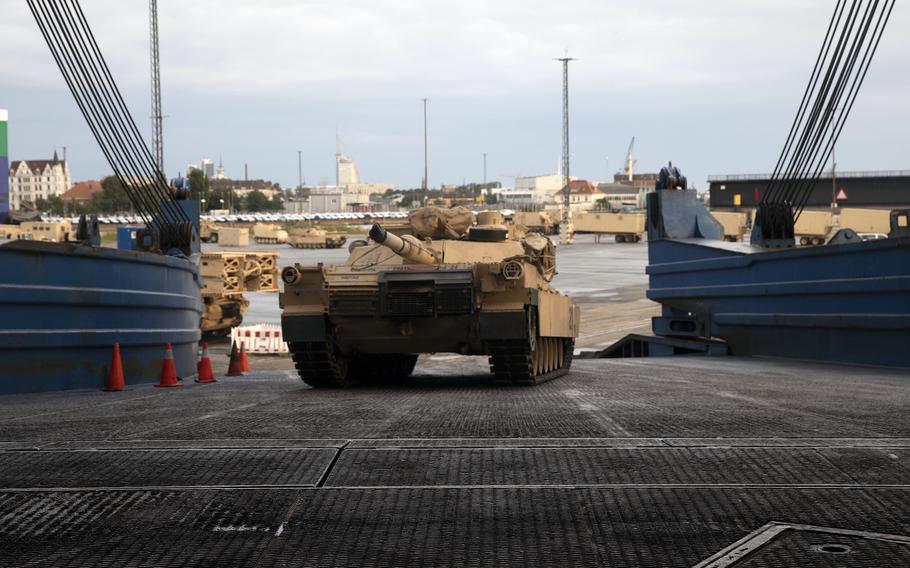
A U.S. Army convoy drives along autobahn A7 near Hannover, Germany, in 2017 on its way to Poland. Germany, Poland and the Netherlands signed a memorandum of intent Jan. 30, 2024, to establish a military corridor, which could help simplify the rules for moving forces around Europe. (Michael Abrams/Stars and Stripes)
STUTTGART, Germany — A corridor meant to enable the faster movement of troops and equipment to NATO’s eastern flank is in the works after three allies this week signed a deal to simplify rules for cross-border military maneuvers.
Poland, Germany and the Netherlands signed a memorandum of intent Tuesday to establish the corridor, which could be a step toward a broader simplification of the rules for moving allied forces across the Continent.
The corridor across the three nations also would connect the major transportation hubs used by U.S. forces in Europe.

U.S. military equipment is offloaded at the port in Gdansk, Poland, in 2021. Germany, the Netherlands and Poland signed a memorandum of intent Jan. 30, 2024, to establish a military corridor, which would simplify the rules for moving forces around Europe. (Katelyn Myers/U.S. Army)
The U.S. relies on ports in Germany and the Netherlands for much of its military hardware that crosses the Atlantic Ocean. Meanwhile, Poland has become the center of gravity for American troops tasked with deterring Russian aggression on NATO’s eastern flank.
The ultimate goal for allies is to establish a military version of the Schengen Zone, which allows most people inside the European Union to travel freely between nations without border controls.
“We need a military Schengen to move military personnel and materiel more quickly and efficiently,” Dutch Defense Minister Kajsa Ollongren said in a statement Tuesday. “This will make Europe stronger.”
Ollongren said the deal with Poland and Germany is an “important step forward.”

U.S. Army equipment is unloaded at Bremerhaven, Germany, in July 2023. The Netherlands, Poland and Germany signed a memorandum of intent Jan. 30, 2024, to establish a military corridor. (Trevares Johnson/U.S. Army)
For years, allies have grappled with how to clear the way for the faster mobilization of forces. When it comes to moving troops and weaponry, different countries have different customs requirements. The result is that convoys can get delayed when crossing borders.
Such problems have emerged over the years during training exercises, but the larger concern is that bureaucratic logjams could slow down forces during a developing crisis.
The German Defense Ministry, in a statement Tuesday, said standardized rules and less bureaucracy will mean “more speed for quick deployments for effective deterrence.”